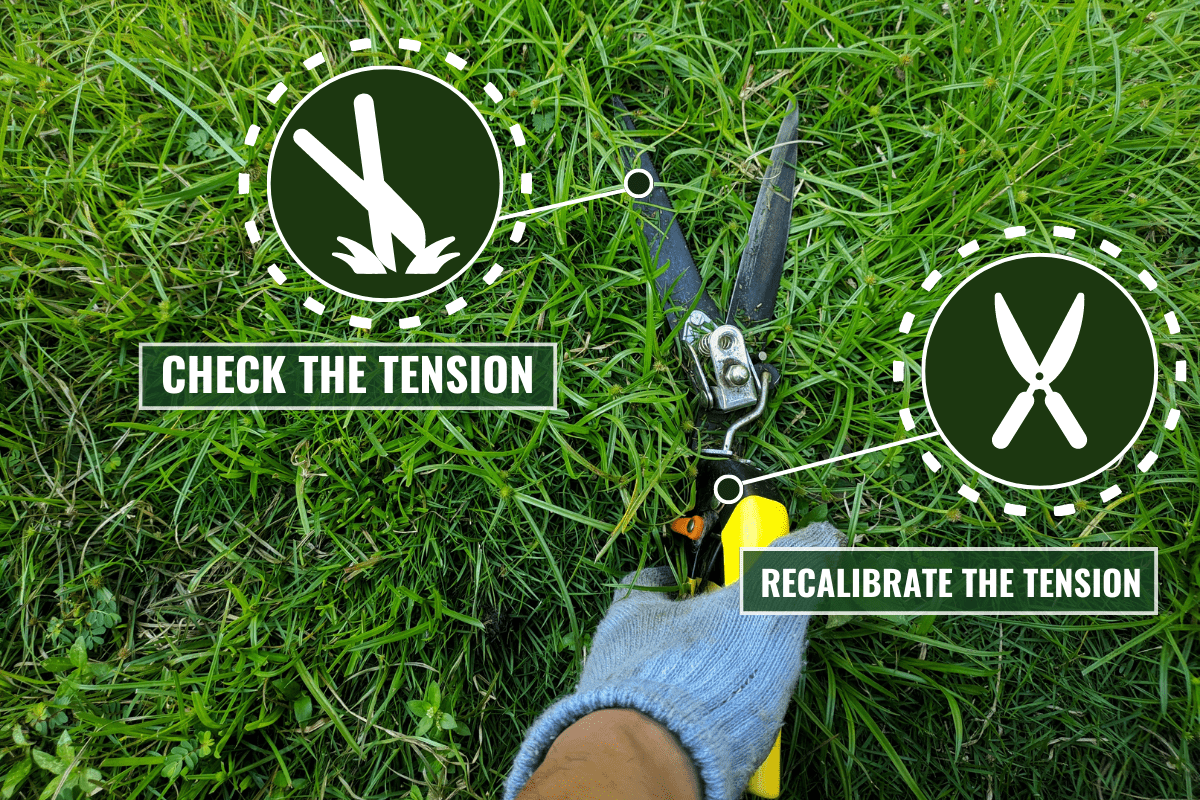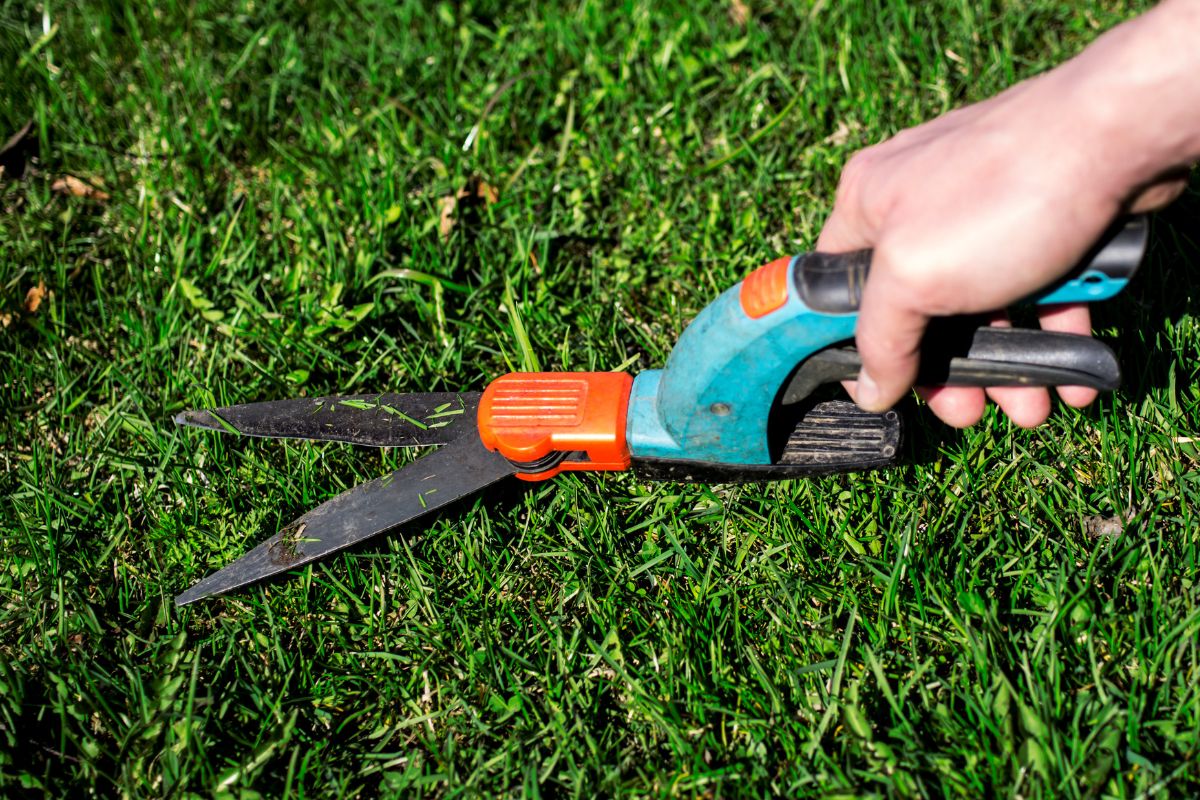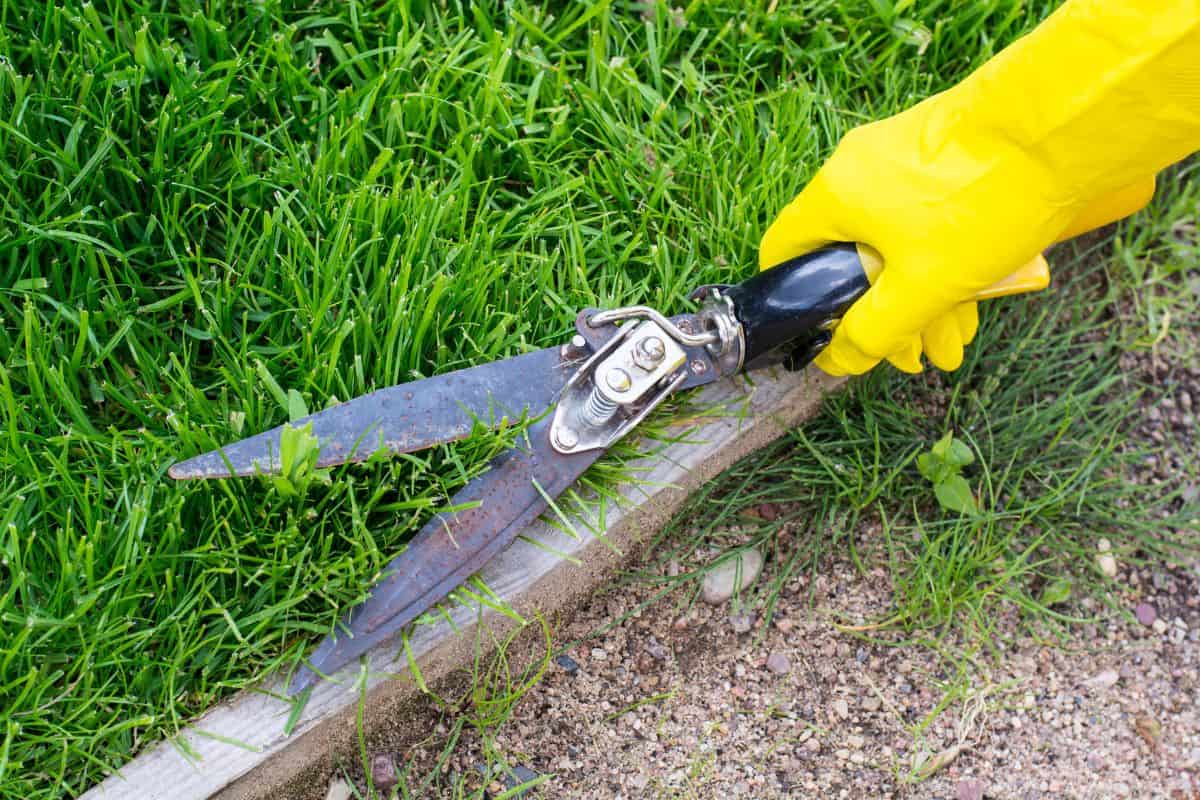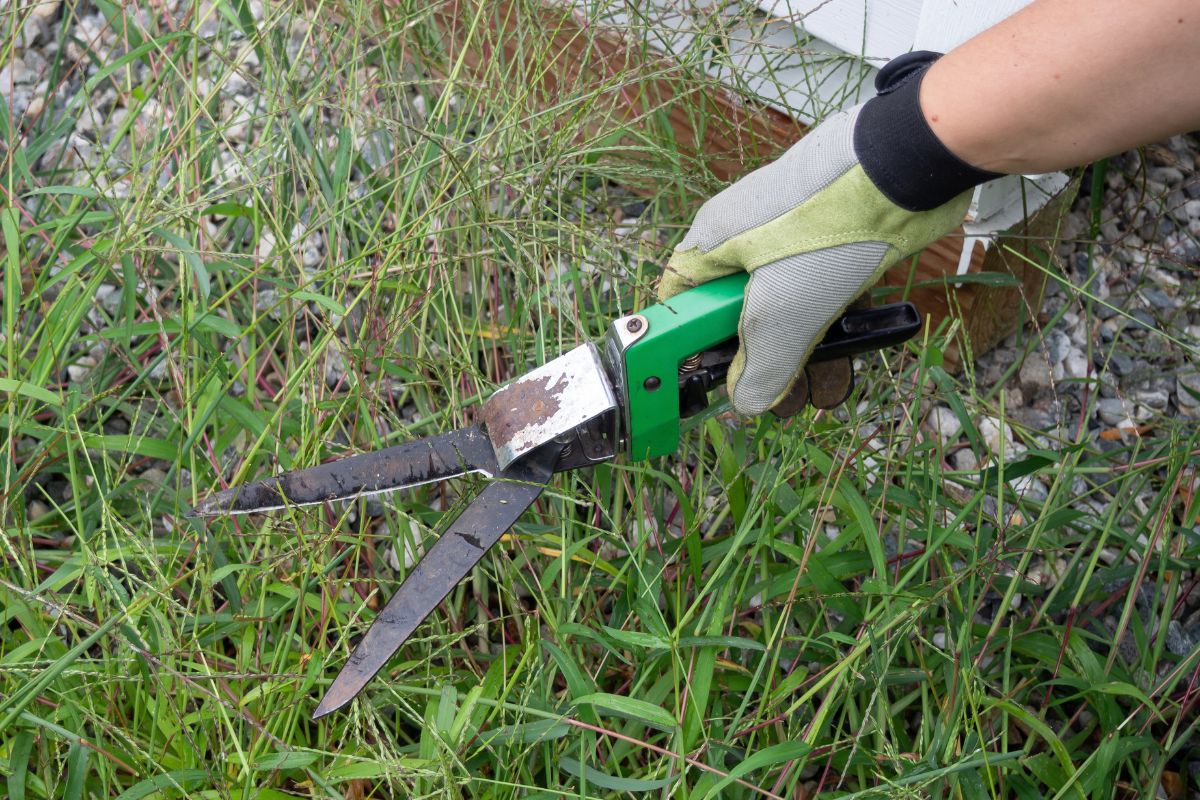Have you ever been frustrated by grass shears not cutting grass properly? They often seem to get caught up on the blades of grass, leaving tufts stuck to the shears. Or perhaps you were tired of adjusting them all the time to maintain the correct tension?
Well, we found out how to adjust grass shears, and we're here to help!
The tension mechanism behind a grass shear is powered by spring action, allowing the shear to cut grass efficiently with the right amount of tension.
However, the spring may need to be adjusted. It can lose tension over time, so adjusting it can ensure that the shear cuts the way it should.
Continue reading as we explain each step in full detail and everything you need to know about adjusting the tension mechanism on a grass shear. We'll also cover some additional questions that you may find relevant about grass shears and tips on making them cut more effectively. Let's begin!
How To Adjust Grass Shears

If you have grass shears that don't seem to work as well as they should, it is likely time to buy a new one. But before you do that, you may be able to adjust your grass shears to fix the problem.
As mentioned, tension allows grass shears to cut grass effectively. The pressure may become loose or too tight. If this is the case, follow these steps:
Check the tension
Testing the tension of grass shears before attempting to adjust them is crucial because the correct tension is necessary for the tool to function.
If the tension is too loose, the blades may not cut effectively, and if the pressure is too tight, the blades may become damaged, or the tool may be difficult to use.
By testing the tension first, you can determine if it needs to be adjusted and, if so, by how much. This will help ensure that the grass shears are in good working order and can effectively cut grass.
How to test the tension level of grass shears

To test the tension of grass shears, you can follow these steps:
- Make sure the grass shears are clean and lubricated. This will help them work correctly.
- Hold the grass shears in your dominant hand and engage the blades by squeezing the handle.
- Slowly release the handle and observe how quickly the blades return to their starting position. The blades should return to their starting position quickly and smoothly, without hesitation or binding.
- If the blades do not return to their starting position smoothly or the tension feels too loose or tight, the grass shears may need to be adjusted.
https://www.youtube.com/shorts/jI7GfjOxup0
Recalibrate the tension
It is essential to recalibrate or adjust the tension of the garden shears when they start to lose pressure. This ensures that the shears can cut through branches and stems effectively.
When the tension is too loose, the blades of the shears will not close completely. That can result in a poor-quality cut and may damage the plant.
In contrast, if the tension is too tight, it can be challenging to open and close the blades, which can be tiring and may lead to hand fatigue.
In either case, it is important to adjust the tension to ensure that the garden shears are working correctly and efficiently.
How to adjust the tension of grass shears
- To adjust the tension of the grass shears, locate the tension adjustment knob or screw on the handle or blade assembly.
- Turn the tension adjustment knob or screw clockwise to increase tension or counterclockwise to decrease tension. Generally, grass shears follow the "right tighty, lefty loosey" rule. However, if you're unsure, check your grass shears' manual.
- Test the tension again by squeezing the handle repeatedly until the blades return to their starting position smoothly and the tension feels comfortable.

How Tight Should Grass Shears Be?
Grass shears should be tightened enough to hold the blades securely in place and prevent them from wobbling or slipping.
However, they should not be so tight that they are difficult to open and close. If the blades are too loose, they may not cut effectively.
If the blades are too tight, it may be difficult to open and close the shears, which can cause fatigue when using them for an extended period.
To adjust the tightness of grass shears, you may need to use a screwdriver to tighten or loosen a screw or two that hold the blades in place.
What Should You Do If Your Grass Shears' Spring-Action Won't Work?
If the spring-action mechanism on your grass shears is faulty, you have a few options for fixing it.
Here are some steps you can try:
- Check to see if the spring is broken or loose from its mount. If the spring is broken, you will need to replace it. If it has come loose, try reattaching it to its mount.
- Try lubricating the spring and the other moving shears to see if that helps improve the tension. Use a light oil, such as WD-40, to lubricate the parts.
- If the spring is in good condition and the shears are still not working correctly, you may need to replace the entire mechanism. This is a more complex repair and may require the assistance of a professional.
- If you cannot fix the grass shears or feel uncomfortable attempting the repair, it may be best to replace them altogether. This can be a more cost-effective option in the long run, especially if the shears are old or have other issues.

Is It Worth It To Fix Broken Grass Shears?
It depends on the specific circumstances.
Here are a few things to consider when deciding whether to repair or replace broken grass shears:
- How old is it? It may be worth getting repaired if it's relatively new and still under warranty.
- How much will the repair cost? If the repair costs more than new grass shears, buying a new one may be more cost-effective.
- How much use will the grass shears see? If you only use the grass shears a few times a year, it may not be worth investing in a repair. On the other hand, if you use it frequently, it may be worth the cost to repair it.
Ultimately, the best decision will depend on your specific situation and needs. If unsure, it might be helpful to get a quote for the repair and compare it to the cost of new grass shears to help you make your decision.
Grass shears are usually inexpensive, so you should be able to find a good deal.
Check out these grass shears on Amazon.
How Do You Sharpen Grass Shears?
Over time, the blades of grass shears can become dull and may need to be sharpened to work effectively. Here is a simple process for sharpening grass shears:
- Start by cleaning the blades of the grass shears. Use a cloth to wipe away any dirt, grass, or debris stuck to the blades.
- Next, use a file to sharpen the blades. You can use a round or flat file, depending on the shape of the blades.
- Hold the file at a slight angle to the blade and move it back and forth along the edge of the blade, following the natural curve of the blade. Do this on both sides of the blade until it is sharp.
- Use a light touch and be careful not to overheat the blades, as this can cause them to lose their temper and become brittle.
- Once the blades are sharp, use a cloth to remove any filings or debris. Then, lubricate the blades with oil to help prevent rust and keep them in good condition.
- Test the sharpness of the blades by cutting a small piece of grass. If the blades are not cutting cleanly, continue to sharpen them until they are sharp.
Check out this sharpening file on Amazon.
What's The Best Angle For Sharpening Grass Shears?

The best angle for sharpening grass shears is around 30-35 degrees. This angle will provide a sharp edge that can cut through grass cleanly and efficiently.
When sharpening the shears, it's important to maintain a consistent angle to ensure that the edge is even and straight. You may need to experiment with different angles to find the one that works best for your specific shears.
In general, it's better to err on the side of a slightly shallower angle rather than a steeper one, as a steeper angle may result in a weaker edge that is more prone to chipping or bending.
How To Maintain Your Grass Shears
Here are some tips for caring for grass shears:
- Clean the blades after each use. Use a soft cloth or brush to remove any grass clippings or debris. You can use turpentine, mild detergent, and warm water to clean the blades.
- Sharpen the blades as needed. You can use a file or a sharpening stone to keep the blades sharp and in good condition.
- Oil the blades regularly. This will help to prevent rust and keep the blades moving smoothly.
- Tighten any loose screws or bolts. Over time, screws and bolts can become loose due to use. Make sure to check them regularly and tighten them as needed.
- Store the grass shears in a dry place when not in use. Moisture can cause rust, so keeping the grass shears dry when not in use is essential.
By following these simple steps, you can help to ensure that your grass shears stay in good condition and continue to work well for a long time.
To Finish Up
Grass shears are valuable tools for trimming lawns and removing weeds from gardens. To perform their job effectively, they require a good level of tension.
If the grass shears start to slip during use, you might want to check to see if they need adjusting.
While we have your attention, check out these related articles:
Best Long-Handled Garden Shears [12 Shopping Suggestions]
Best Garden Edging Shears [10 Options Every Gardener Should Know]


